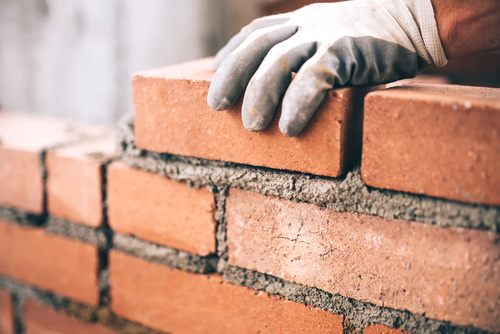A Comprehensive Guide to a Self Build Mortgage: Everything You Need to Know

Are you dreaming of building your own home?
Embarking on a self-build project can be an exciting journey towards creating the home of your dreams.
However, navigating the world of self-build mortgages and understanding the ins and outs of the process can be daunting.
Fear not, as we’ve compiled a comprehensive guide to help you every step of the way.
Understanding Self-Build Mortgages
Self-build mortgages are specially designed for individuals looking to construct their own homes. Unlike traditional mortgages where funds are released in one lump sum, self-build mortgages are released in stages, known as stage payments.
This allows you to draw down funds as needed throughout the various stages of construction.
Understanding the mortgage process for self-build mortgages is crucial, as it involves several unique stages and complexities, including the importance of seeking advice from an independent mortgage adviser and considerations for stage payments.
How Long Do You Have to Draw Down a Self-Build Mortgage?
The timeframe for drawing down a self-build mortgage typically varies depending on the lender.
However, it’s common for lenders to provide a period of up to 24 months for drawing down the funds. This allows you ample time to complete the construction of your home.
Do You Need Planning Permission for a Self-Build Mortgage?
Yes, obtaining planning permission is a crucial step in the self-build process. Before applying for a self-build mortgage, you must ensure that your proposed project complies with local planning regulations.
Working with an architect or planning consultant can help ensure that your plans meet the necessary requirements.
How Much Deposit Do You Need to Build?
The amount of deposit required for a self-build mortgage varies depending on the lender and your individual circumstances.
Typically, lenders require a deposit of at least 10-20% of the total project cost.
This deposit percentage directly influences the maximum loan amount you can borrow, which is calculated based on the loan-to-value (LTV) ratio, taking into account the cost of the site and construction.
However, some lenders may require a higher deposit, so it’s essential to shop around and compare options.
What is Loan-to-Value (LTV) for Self-Build?
Loan-to-Value (LTV) is a crucial factor in self-build mortgages.
LTV represents the ratio of the loan amount to the appraised value of the property.
For self-build mortgages, lenders typically offer LTV ratios of up to 75-80%, meaning you’ll need to provide a deposit to cover the remaining percentage of the property’s value.
How to Draw Down a Self-Build Mortgage?
Drawing down a self-build mortgage involves a series of stage payments as construction progresses.
Each stage payment is released upon completion of specific milestones, such as laying the foundation, reaching the roof stage, and completing interior finishes.
It’s essential to work closely with your lender and builder to ensure that payments are made promptly at each stage.
Additionally, with a self-build mortgage, borrowers only need to pay interest on the portion of the loan that has been drawn down, not the entire mortgage amount.
Benefits of building your own home
Government Support
One of the perks of embarking on a self-build journey is the opportunity to avail yourself of government incentives.
For instance, in Ireland, first-time buyers who are constructing their homes may qualify for the Help to Buy scheme.
This initiative, provided by the Irish Government, offers financial assistance to eligible individuals undertaking self-build projects, potentially easing the burden of building costs.
If you’re considering building your own home and fall within the specified timeframe, exploring these governmental incentives could significantly contribute to your project’s feasibility.
Cost Efficiency
Contrary to popular belief, constructing your own home can often lead to long-term cost savings compared to purchasing an already-built property.
While the upfront expenses may seem daunting, especially when factoring in land acquisition, architectural fees, and construction materials, the overall expenditure can be significantly lower than purchasing a pre-existing property.
This cost-effectiveness stems from various factors, including the ability to customize your home to suit your needs and budget, as well as potentially avoiding inflated market prices associated with ready-built homes.
Challenges
Time and Dedication
Undertaking a self-build project requires a considerable investment of time, energy, and dedication.
Unlike the relatively straightforward process of purchasing an existing property, building your own home demands meticulous planning and oversight at every stage of the construction journey.
From sourcing a suitable plot of land and securing planning permission to engaging architects, contractors, and navigating the complexities of mortgage arrangements, the process can be both mentally and physically taxing.
However, for those willing to invest the time and effort, the end result can be immensely rewarding, offering a sense of pride and accomplishment in creating a personalized living space.
Risk Management
Building your own home entails inherent risks that must be carefully managed throughout the construction process.
Delays in construction, unforeseen expenses, and fluctuations in market conditions are just a few of the potential challenges that self-builders may encounter. It’s essential to approach the project with a realistic understanding of these risks and develop contingency plans to mitigate their impact.
While the journey may be fraught with uncertainties, thorough planning, diligent oversight, and prudent decision-making can help minimize risks and increase the likelihood of a successful outcome.
In essence, while self-build projects offer numerous advantages, including government support and potential cost savings, they also come with their fair share of challenges, requiring careful consideration and planning.
By weighing the benefits against the drawbacks and adopting a proactive approach to risk management, aspiring self-builders can navigate the complexities of the construction process and ultimately achieve their vision of home ownership.
Other Considerations
In addition to securing financing, there are several other factors to consider when undertaking a self-build project. These include:
- Planning Permission: Ensuring that your plans comply with local regulations.
- Legal Fees: Budgeting for legal fees associated with land purchase and conveyancing.
- Interest Rates: Understanding the interest rates associated with your mortgage and any potential fluctuations.
- Mortgage Protection Cover: Exploring options for mortgage protection cover to safeguard your investment.
- Home Insurance: Obtaining adequate home insurance coverage to protect your property against unforeseen events.
A mortgage broker plays a crucial role in assisting individuals to navigate the mortgage process, choose the best lender for their self-build project, and manage the application and stage payment process based on the building’s progress.
Building your own home is a rewarding experience that offers unparalleled freedom and flexibility. With the right knowledge and preparation, navigating the world of self-build mortgages can be a seamless process.
By understanding the key steps involved, from securing financing to navigating the construction process, you’ll be well-equipped to turn your dream home into a reality.
Remember, each self-build journey is unique, and it’s essential to seek professional advice and conduct thorough research to ensure a successful outcome.
With careful planning and attention to detail, you’ll be well on your way to building the home of your dreams.
